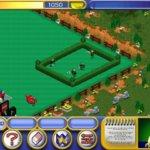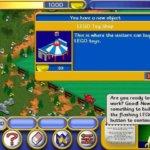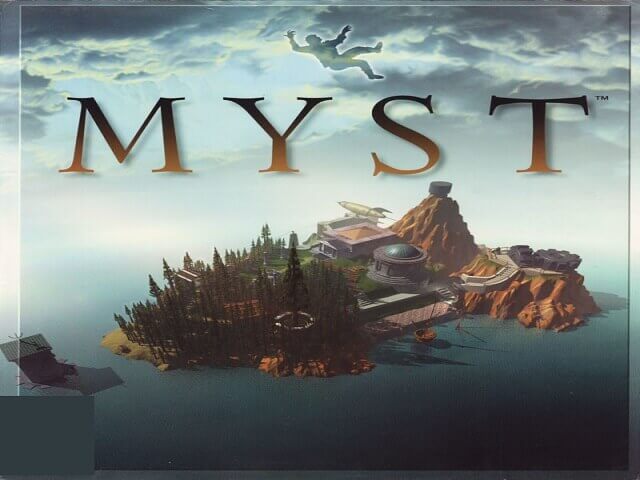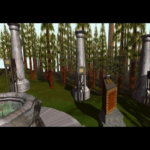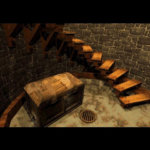Category: Puzzle
-

Lemmings
Game Description
Lemmings is a puzzle–strategy video game created by DMA Design and published by Psygnosis for the Amiga in 1991 and later ported to a variety of other platforms. Russell Kay, Mike Dailly, and David Jones created the game, which was inspired by a simple animation Dailly created while experimenting with Deluxe Paint.
The goal of the game is to lead a group of anthropomorphized lemmings through a series of obstacles to a predetermined exit. To save the required number of lemmings to win, one must figure out how to assign a limited number of eight different skills to specific lemmings that allow the selected lemming to change the landscape, influence the behavior of other lemmings, or clear obstacles to allow the rest of the lemmings to pass safely.
Lemmings were one of the most popular video games in the early 1990s. It was the second-highest-rated game in Amstrad Action history, and Next Generation ranked it as the eighth-greatest game of all time in 1996. The lemming game gorilla tag is also one of the most widely ported and best-selling video games, with an estimated 20 million copies sold across multiple ports. The game’s popularity prompted the development of sequels, remakes, and spin-offs, as well as the creation of similar games. Many critics have praised it as one of the best games of all time.
Publishers Psygnosis Developers DMA Design Release date 1991 Genre Puzzle [title] Gameplay
Lemmings are divided into several levels, each of which is divided into four difficulty categories. Each level starts with one or more trap doors opening from above, releasing a steady stream of lemmings video game who all follow one another. Large drops, booby traps, and lava pools are among the obstacles that prevent lemmings from reaching the exit.
By clearing or creating a safe passage through the landscape for the lemming to use, the goal is to guide at least a certain percentage of the green-haired, blue-robed lemming game gorilla tag from the entrance to the exit. Unless given a special task, each lemming will walk in a single direction, ignoring any other lemming in its path (except Blockers), falling off any edges, and turning around if they come across an obstacle they cannot pass. A lemming can die in several ways, including falling from great heights, falling into water or lava, disappearing off the bottom of the level map, being caught in a trap or fire, or being assigned the Bomber skill. Every level has a time limit; if the clock counts down to zero, the level automatically ends.
To complete the level, the player must assign specific skills to different lemmings video games. Which skills and how many uses of each are available to the player vary by level, and the player must carefully assign the skills to successfully guide the lemmings video game. There are eight abilities that can be delegated: Climbers ascend vertically but descend if they come into contact with an overhang. Floaters use a parachute to safely fall from great heights. Bombers explode after a five-second timer, destroying themselves and any destructible landscape in their path, but not other lemmings or traps. Blockers stop other lemmings from passing; lemmings that collide with a Blocker simply reverse direction. A 12-step stairway is built by builders. Bashers, Miners, and Diggers dig horizontally, diagonally downwards, or directly downwards respectively.
While the player can pause the game to inspect the lemmings’ levels and status, skills can only be assigned in real-time. Lemmings video games are released at a rate determined by the level at first (from 1 to 99). The player can increase the rate to a maximum of 99 and then decrease it to, but not below, the initial rate. The player can also “nuke” all of the remaining lemming on the screen, transforming them into Bombers. This option can be used to abort a level in a no-win situation, remove any Blockers that remain after all remaining lemmings game have been rescued, or quickly end a level once the required percentage of saved lemmings game has been reached.
The four difficulty groups – “Fun”, “Tricky”, “Taxing”, and “Mayhem” – are used to organize the levels in order of difficulty. This rating is based on a number of factors, including the number of obstacles the player must overcome, the number of skill types available to assign, the time limit, the minimum rate of lemming release, and the percentage of lemmings game that must be saved. Some versions include additional difficulty levels with more levels in each.
Two-player mode
There are also 20 two-player levels in the original game Lemmings. This took advantage of the Amiga’s ability to support two mice at the same time, as well as the Atari’s ability to support a mouse and a joystick at the same time. Each player is given their own view of the same map (on a vertically split-screen), can only order their own game lemmings (green or blue), and has their own base. The goal is to attract more lemmings (of any color) to one’s own base than the other player. The game progresses through the 20 levels until neither player has brought any lemmings game home.
Download [title]
We might have the game available for more than one platform. Lemmings is currently available on these platforms:
DOS (1991)
How to play on Windows (Lemmings_DOS_EN.rar)
- Click on the download button. It should redirect you to your download. Make sure you download the file properly and that your internet does not disconnect while downloading.
- Extract the “Lemmings” folder to your desktop. You will need software such as WinRAR to do this.
- Download the software called DOSBox and put a shortcut for DOSBox onto your desktop.
- Open the “Lemmings” folder and then open the “Game Files” folder.
- Drag the file called “lemvga” on top of the DOSBox icon and the game should now launch in DOSBox.
- Enjoy the game lemmings!
[title] Screenshots
DOS
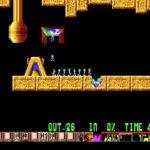
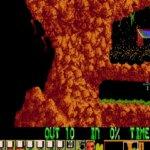
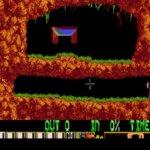


LEGOLAND
Legoland is a construction and management simulation video game based on the Legoland theme that was released on May 1, 2000. It is similar to the RollerCoaster Tycoon series (a similar series of games with the same premise), but with a more simplistic and child-friendly gameplay style. Justin Fletcher provides the voice work.
Game Description
| Publishers | Lego Media |
| Developers | Krisalis Software |
| Release date | 2000 |
| Genre | Educational, Puzzle, Simulation |
[title] Gameplay
Story Mode
In Story Mode, the player must first complete five tutorial levels to learn how to play, followed by ten Miniland levels to rebuild the Park. When lego Legoland games are finished, the player is given a certificate that they can print out. Cutscenes in Story Mode show Professor Voltage traveling back in time and discovering new buildings, rides, and park themes while using his Duplicator Ray to collect hologram-like copies of them.
Free Play Mode
In Free Play Mode, the player can build their own Legoland ny park without any objectives or time or money constraints, but they can only use the sets they have unlocked up to that point and there is a limit to the number of rides, decorations, and restaurants that can be placed. When the Legoland video game is completed in Story Mode, the player gains access to all unlockables in Free Play Mode.
Download [title]
We might have the Legoland game available for more than one platform. LEGOLAND new york is currently available on these platforms:
Windows (2000)
[title] Screenshots
Windows
